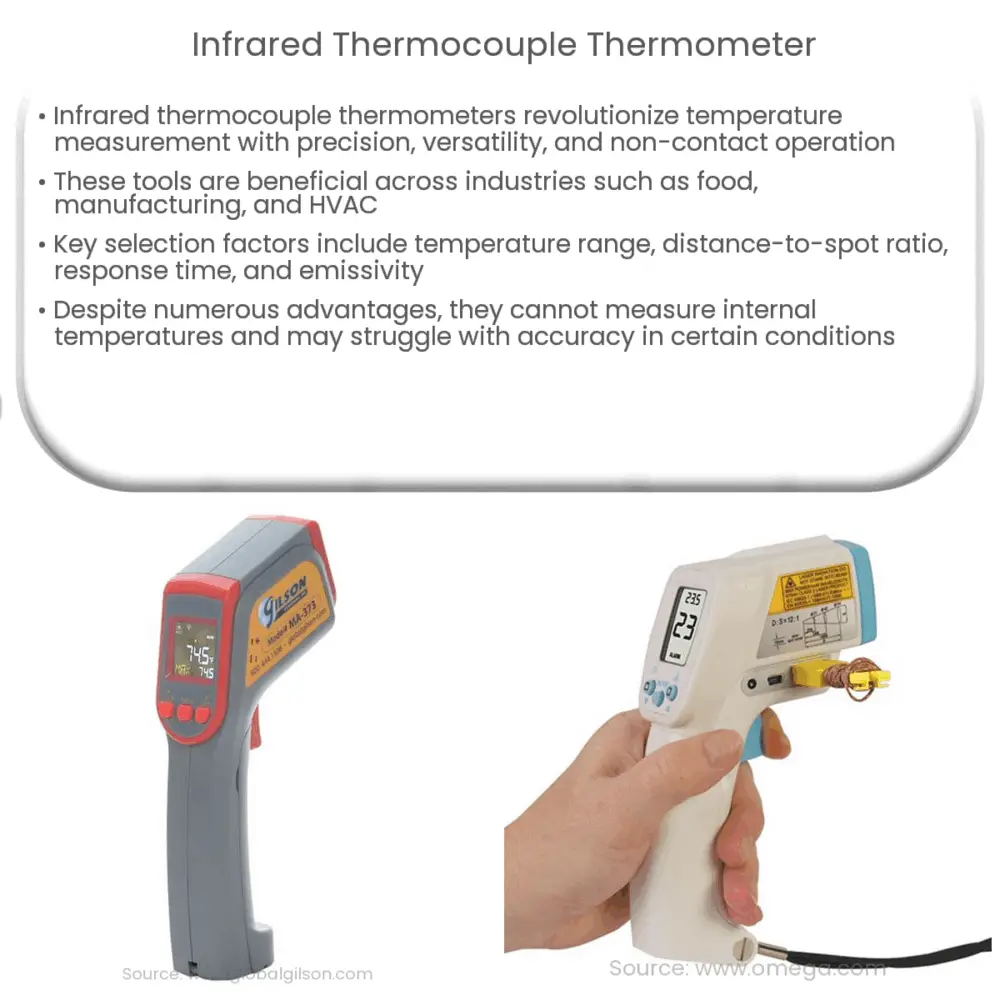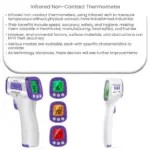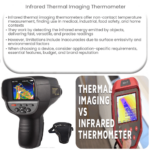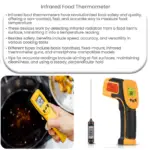Explore the workings, applications, benefits, and considerations of Infrared Thermocouple Thermometers in our comprehensive guide.

Infrared Thermocouple Thermometer: An Overview
The world of temperature measurement has been revolutionized with the advent of infrared thermocouple thermometers. This sophisticated device offers an unparalleled blend of precision, versatility, and convenience, making it indispensable in a multitude of settings.
The Science Behind Infrared Thermocouple Thermometers
An infrared thermocouple thermometer operates on the principles of black body radiation and thermocouple technology. All objects emit infrared radiation as a function of their temperature. This invisible radiation can be accurately measured without any physical contact, thus the name ‘non-contact’ thermometer.
The core component of an infrared thermometer is the thermopile. The thermopile absorbs the infrared radiation emitted by the object and converts it into heat. This heat is then converted into electricity, which is subsequently measured and used to determine the object’s temperature.
Functionality and Use Cases
Infrared thermocouple thermometers are widely used in a range of sectors due to their ability to measure temperature quickly and accurately. These sectors include the food industry, manufacturing, HVAC, automotive, and medical fields, to name a few.
- Food Industry: Ensuring food is cooked at the right temperature is crucial for both taste and safety. An infrared thermocouple thermometer enables professionals to measure the temperature of food surfaces accurately and rapidly without contamination risk.
- Manufacturing: In manufacturing processes, equipment and materials often need to be maintained at specific temperatures. Infrared thermometers provide an efficient way to monitor these temperatures without halting the process.
- HVAC: Heating, Ventilation, and Air Conditioning systems require regular temperature checks. Infrared thermometers allow HVAC technicians to diagnose issues and ensure systems are functioning optimally.
Advantages of Infrared Thermocouple Thermometers
The most significant advantage of infrared thermocouple thermometers is their ability to measure temperature from a distance, ensuring safety when dealing with hot surfaces or hazardous substances. They also offer real-time measurements, allowing for immediate action if needed.
Another notable benefit is their ability to measure a wide range of temperatures, from extremely low (cryogenic levels) to incredibly high (such as molten metal). This wide range of measurement capabilities, coupled with their non-contact nature, makes infrared thermocouple thermometers an invaluable tool in various industries.
Choosing the Right Infrared Thermocouple Thermometer
While infrared thermocouple thermometers offer numerous advantages, it’s important to choose the right one to suit your specific needs. Factors to consider include temperature range, distance-to-spot ratio (D:S), response time, and emissivity.
- Temperature range: Different thermometers are capable of measuring different temperature ranges. Ensure the one you choose is suited to the range you require.
- Distance-to-spot ratio (D:S): This ratio indicates the diameter of the area being evaluated in comparison to the distance from the object. A higher D:S ratio means the thermometer can measure a smaller area from a greater distance.
- Response time: This indicates how quickly the thermometer can provide a reading. Faster response times are often desirable in fast-paced environments.
- Emissivity: Emissivity refers to an object’s efficiency in emitting thermal energy. Most thermometers come with fixed emissivity settings, but adjustable ones offer more flexibility for different materials.
Limitations of Infrared Thermocouple Thermometers
Despite their numerous advantages, infrared thermocouple thermometers also have limitations. They measure surface temperatures, not internal temperatures, which can be a drawback in certain applications such as cooking. Also, the accuracy of measurements can be affected by dust, humidity, or smoke, and reflective surfaces can be challenging to measure.
Conclusion
Infrared thermocouple thermometers have revolutionized temperature measurement by offering a non-contact, accurate, and versatile solution. Whether you’re in the food industry, manufacturing, HVAC, or any field that requires precise temperature monitoring, this instrument can be a game-changer. However, to get the best out of it, it’s essential to understand its strengths, limitations, and suitability for your specific application.
In the end, the advent of infrared thermocouple thermometers stands as a testament to the ingenuity of human innovation. As technology continues to advance, we can look forward to even more accurate, reliable, and versatile tools to aid us in our quest for precision and efficiency.




